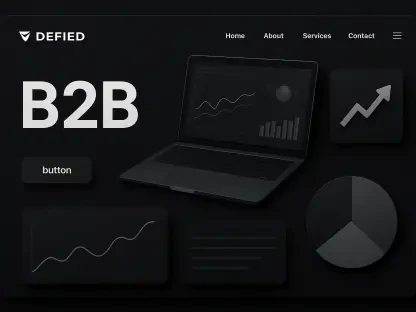As we prepare for 2024, it’s vital for search engine marketers to reflect on past outcomes while gearing up for potential changes in the PPC domain. This article aims to outline a robust strategic plan that will pave the way for PPC triumph in the coming year.In developing a strategy for 2024, taking stock of previous marketing efforts and their results is invaluable. This historical data helps in anticipating trends and adapting strategies accordingly. We must also remain agile, keeping an eye on industry shifts that could impact PPC tactics.To navigate the PPC environment successfully, one must understand the importance of keyword selection, ad copy optimization, and bid management. Additionally, staying informed about advancements in artificial intelligence and machine learning can offer a competitive edge, as these technologies continue to shape the digital marketing landscape.Furthermore, it’s crucial to consider the growing emphasis on user privacy and how it may affect data collection and targeting strategies. Regulations like GDPR and CCPA have already started transforming the online advertising space, and similar policies may continue to emerge.In sum, the forthcoming year demands a well-rounded and flexible plan that leverages both retrospective analyses and forward-thinking approaches. With these insights in mind, marketers can forge a path to PPC success in 2024 that balances proven tactics with adaptive strategies for future uncertainties.
1. Gather Data from the Early Part of the Previous Year
To set the stage for your 2024 PPC strategy, begin by analyzing data from the early months of the previous year. This foundational step involves a side-by-side comparison of statistics from January to August of 2023 against the same period in 2022. Observing year-on-year trends, particularly in areas like user behavior and cost metrics, can provide insight into shifts in the SEM environment and help establish a baseline for the new year’s budget and campaign strategy.
2. Identify Budget-Related Impression Share Losses
Once you’ve established your performance baseline, the next step is to meticulously assess instances where budget restrictions may have resulted in a dwindled impression share over the previous year. Zero in on specific campaigns that were affected during particular months, where insufficient funding may have impeded success. Reflect on the better outcomes that could have been realized if the financial resources had been adequate. This review process is not just about recognizing where you’ve been held back; it’s about preparing for the future. The insights gained from this exercise serve a vital role in planning; they allow you to make informed decisions moving forward. Ensuring that each campaign has the necessary budget to perform effectively can make a substantial difference in your overall success. By understanding the financial shortfalls of the past, you can fine-tune your budget allocation for the upcoming periods. Allocate funds to campaigns at the right time to prevent the same budgetary pitfalls that previously hindered your impression share. Careful planning and reallocating resources based on historical data will guarantee that your future campaigns have the monetary support they need to thrive, ultimately leading to better performance and a stronger impression in the market.
3. Delve Deeper Into Missed Opportunities
Missing out on potential opportunities due to a low impression share caused by ranking can have a significant impact on your PPC performance. Calculating the potential reach and conversions that were lost due to these ranking issues helps paint a clearer picture of what could have been achieved. By incorporating these estimations, your PPC plan for 2024 can better mitigate missed opportunities and harness potential growth areas.
4. Combine Underfunding and Ranking Missed Opportunities
Using the combined insights from the analysis of last year’s financial limitations and ranking issues, you can establish precise and realistic performance targets for your Pay-Per-Click (PPC) campaigns for the coming year. When setting goals for 2024, it is crucial to consider the dual impact of budget constraints and where your adverts fell short in rankings. This approach will not only provide a clear vision of where improvements are needed but also what is feasible within your resource parameters. The analysis should guide your strategic planning, aiming for optimization in spend efficiency, conversion rates, and return on investment, which are imperative for a successful PPC campaign. By carefully assessing last year’s outcomes and integrating those learnings, you position yourself to craft a fine-tuned PPC strategy that maximizes every dollar spent and propels your campaigns to achieve enhanced visibility and profitability in 2024. Keep in mind that the digital advertising landscape is ever-changing; therefore, your goals should be flexible enough to adapt to emerging trends and technologies while remaining stringent enough to measure progress effectively.
5. Analyze Average CPC Growth
Inflation in CPC rates is an inevitable aspect of the SEM landscape. Scrutinize the growth in average CPC over the past two years to anticipate expense adjustments. This step is pivotal in forecasting budgetary needs, allowing you to allocate sufficient funds to maintain visibility in a competitive market without compromising your return on investment.
6. Examine Data from the Last Election Year
Election seasons are notorious for causing shifts in consumer behaviors, which in turn can create waves across digital marketing efforts. A look back at data from the start of 2020 through August—the most recent election year—can offer valuable insights into how such cycles can affect marketing strategies. This historical analysis is critical for preparing your digital marketing plans for the 2024 elections. Understanding these patterns helps identify potential market changes and enables marketers to adapt their strategies accordingly. Considering voter sentiment, increased political advertising, and shifting priorities during election times can alter the digital landscape significantly. Being proactive by utilizing 2020 data, marketers can anticipate disruptions and develop flexible strategies for the upcoming election year.Implement forward-thinking tactics, such as diversifying ad platforms and adjusting messaging, to maintain steadiness. This preparedness will ensure that your marketing efforts remain effective and resilient amidst the dynamism of an election cycle. The goal is to keep your marketing strategy fluid, allowing it to accommodate the inevitable market ebbs and flows associated with the electoral process. By proactively planning with these factors in mind, you’ll position your marketing campaigns to succeed regardless of the political season’s influence on consumer behavior.
7. Apply the Same Review for the Election Period
Further dissect your data by applying the insights gained during the election period of September to Election Day. Termed the “Election Impact,” this period is often marked by heightened activity and can deviate significantly from normal marketing trends. Understanding this can allow you to tailor your strategies to capitalize on unique voter-related behaviors and traffic patterns.
8. Assess Post-Election Through Year-End
Upon carefully evaluating the nuances of the election cycle, it’s essential to extend our strategic lens to include the aftermath of the election, stretching through to the year’s end. This segment of the calendar often coincides with the busiest shopping seasons, presenting a unique opportunity to capitalize on heightened consumer engagement. The aim should be to meticulously tailor PPC campaign expenditures and marketing maneuvers, leveraging increased traffic that typically accompanies this time of year.Your budget calibration should be precise, as the post-election period can fluctuate in terms of consumer sentiment and spending habits. A keen eye on market trends and shopper behavior post-election is crucial to anticipate and exploit these changes successfully. Concurrently, it’s imperative that your strategic approach evolve with the shifting landscape. This may mean revisiting your keyword strategies, adjusting ad copy, and ensuring your campaign messaging aligns with the current public mood.Overall, the goal is to align your PPC initiatives with the anticipated consumer demand surge. Not only must your campaigns be agile and responsive to the post-election climate, but they should be optimized to seize the momentum during peak shopping windows such as Black Friday, Cyber Monday, and the holiday season. By optimizing your PPC efforts for these critical periods, you stand to maximize return on investment, customer engagement, and overall sales potential, setting the stage for a profitable close to the year.
9. Consolidate Budgets from All Periods
To craft a comprehensive annual plan for 2024, it’s crucial to consolidate the budgets from different times of the year and extract strategic insights. This encompassing budget needs to take into account seasonal fluctuations, the impact of elections, and the broader market landscape to serve as a reliable financial guide.As we move forward, staying agile in PPC and SEM is vital. The upcoming year poses unique challenges and opportunities in these dynamic fields. By maintaining an informed and adaptable strategy, you have the tools to manage unpredictability and capitalize on favorable circumstances for effective PPC results. This overarching strategy ensures alignment with business goals and market movements, ensuring optimal allocation of resources throughout the year. It’s pivotal for success in a landscape where digital marketing practices and consumer behaviors are continually evolving. With a strategic annual budget in place, businesses can make informed decisions, optimize campaign performance, and achieve a competitive edge in the digital marketing realm.









